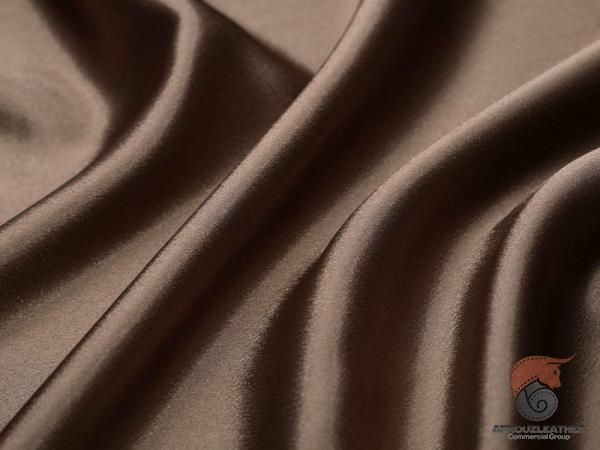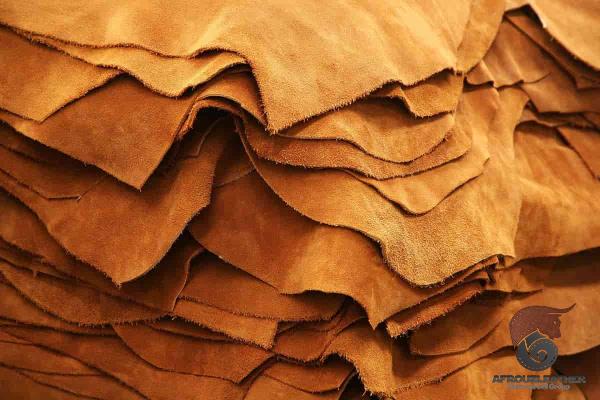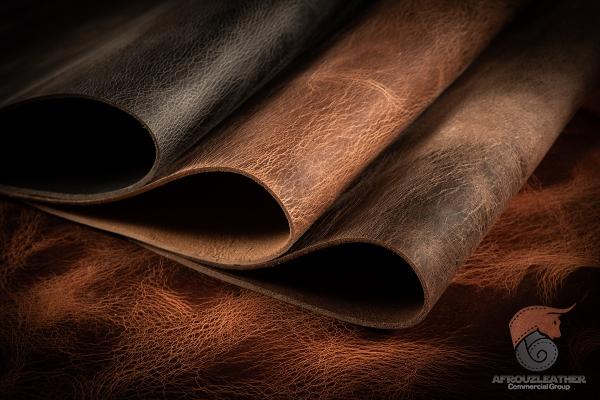Leather, a quintessential material that has withstood the test of time, continues to captivate with its unique blend of sophistication, durability, and versatility. Among the many forms in which it is available, large leather hides stand out for their undeniable impact in countless industries. This article aims to provide a comprehensive summary of large leather hides, exploring their characteristics, applications, sourcing, and the growing demand for sustainable alternatives. Understanding Large Leather Hides: Large leather hides are the raw material sourced from animal skins, which are meticulously processed and transformed into beautiful, durable, and functional leather products. These hides, typically derived from cattle, buffalo, or other large animals, offer immense flexibility due to their size and quality. Characteristics of Large Leather Hides: 1. Size: Measuring anywhere from 40 to 80 square feet, these hides provide a substantial amount of material for various purposes, making them an economical choice for manufacturers. 2. Quality: Large leather hides are known for their durability, strength, and ability to develop a rich patina over time, enhancing their visual appeal. 3. Thickness: Depending on the specific application and customer requirements, hides can range from thin and pliable to thicker and more rigid, providing options for different projects. 4. Grain: The natural grain pattern present on these hides showcases the unique characteristics and authenticity of the leather. Applications of Large Leather Hides: 1. Fashion and Leather Goods: Large leather hides are extensively used for crafting high-quality clothing items such as jackets, trousers, skirts, and accessories like belts, bags, and wallets. The versatility of leather allows for an array of designs and styles to cater to various fashion tastes. 2. Automotive Industry: The automotive sector relies on large leather hides for manufacturing luxury car interiors, including seats, door panels, and steering wheels. Leather’s luxurious feel, durability, and resistance to wear and tear make it an ideal choice for high-end vehicles. 3. Furniture and Upholstery: Large leather hides are utilized in the production of elegant furniture, providing a touch of luxury and durability to sofas, chairs, and ottomans. The natural breathability of leather ensures comfort even in extended seating periods. 4. Interior Design: From wall paneling and floor coverings to decorative accents, large leather hides are utilized to create a luxurious ambience in homes, offices, hotels, and other interior spaces.
leather
 The application of leather produces a timeless and sophisticated aesthetic. 5. Footwear: Leather hides are the backbone of the footwear industry, enabling the creation of durable, comfortable, and stylish shoes, boots, and sandals. The material’s ability to conform to the shape of the foot, while maintaining strength, sets it apart from synthetic alternatives. 6. Sports Equipment: Many sporting goods, such as boxing gloves, footballs, basketballs, and saddle seats, rely on large leather hides for their superior performance and strength. The material’s durability ensures longevity and excellent grip during various sporting activities. Sourcing Large Leather Hides: 1. Animal Welfare and Ethical Sourcing: The responsible sourcing of large leather hides requires adherence to strict ethical standards, ensuring that animals are treated humanely throughout their lives and during the slaughter process. Certifications such as the Leather Working Group (LWG) help identify suppliers committed to sustainable and ethical practices. 2. Tanneries and Processing: The transformation of raw hides into beautiful leather is achieved through various processing techniques, including tanning, dyeing, and finishing. State-of-the-art tanneries play a crucial role in ensuring quality while minimizing environmental impact. 3. Global Supply Chains: Large leather hides are sourced globally, with major contributors being countries like the United States, Brazil, China, and Italy. Understanding the intricacies of global supply chains helps ensure the availability of high-quality hides for manufacturers worldwide. Sustainable Alternatives and Environmental Impact: 1. Plant-Based Leather Substitutes: With the growing environmental concerns associated with traditional leather production, innovative alternatives such as pineapple leather (Piñatex), mushroom leather, and other plant-based materials have emerged. These sustainable alternatives aim to reduce reliance on animal-derived products while providing similar properties. 2. Environmental Challenges: The leather industry faces scrutiny regarding its environmental impact due to factors such as wastewater pollution, chemical usage, and deforestation. However, advancements in sustainable practices, such as chrome-free tanning processes and water recycling, are being implemented to mitigate these challenges. Conclusion: Large leather hides are a testimony to the artistry and craftsmanship of transforming raw animal skins into a premium material cherished across numerous industries. From fashion to interiors, automotive to footwear, these hides have transcended time and continue to thrive due to their exceptional characteristics. As the demand for sustainable alternatives grows, the industry is exploring plant-based substitutes, while also focusing on responsible sourcing and environmentally friendly practices. The enduring appeal of large leather hides is a testament to the enduring beauty, durability, and versatility they offer.Large Leather Hides: Unveiling the Beauty and Versatility of an Iconic Material I. The Global Leather Industry: The global leather industry is a thriving sector, fuelled by the demand for high-quality leather goods across various industries.
The application of leather produces a timeless and sophisticated aesthetic. 5. Footwear: Leather hides are the backbone of the footwear industry, enabling the creation of durable, comfortable, and stylish shoes, boots, and sandals. The material’s ability to conform to the shape of the foot, while maintaining strength, sets it apart from synthetic alternatives. 6. Sports Equipment: Many sporting goods, such as boxing gloves, footballs, basketballs, and saddle seats, rely on large leather hides for their superior performance and strength. The material’s durability ensures longevity and excellent grip during various sporting activities. Sourcing Large Leather Hides: 1. Animal Welfare and Ethical Sourcing: The responsible sourcing of large leather hides requires adherence to strict ethical standards, ensuring that animals are treated humanely throughout their lives and during the slaughter process. Certifications such as the Leather Working Group (LWG) help identify suppliers committed to sustainable and ethical practices. 2. Tanneries and Processing: The transformation of raw hides into beautiful leather is achieved through various processing techniques, including tanning, dyeing, and finishing. State-of-the-art tanneries play a crucial role in ensuring quality while minimizing environmental impact. 3. Global Supply Chains: Large leather hides are sourced globally, with major contributors being countries like the United States, Brazil, China, and Italy. Understanding the intricacies of global supply chains helps ensure the availability of high-quality hides for manufacturers worldwide. Sustainable Alternatives and Environmental Impact: 1. Plant-Based Leather Substitutes: With the growing environmental concerns associated with traditional leather production, innovative alternatives such as pineapple leather (Piñatex), mushroom leather, and other plant-based materials have emerged. These sustainable alternatives aim to reduce reliance on animal-derived products while providing similar properties. 2. Environmental Challenges: The leather industry faces scrutiny regarding its environmental impact due to factors such as wastewater pollution, chemical usage, and deforestation. However, advancements in sustainable practices, such as chrome-free tanning processes and water recycling, are being implemented to mitigate these challenges. Conclusion: Large leather hides are a testimony to the artistry and craftsmanship of transforming raw animal skins into a premium material cherished across numerous industries. From fashion to interiors, automotive to footwear, these hides have transcended time and continue to thrive due to their exceptional characteristics. As the demand for sustainable alternatives grows, the industry is exploring plant-based substitutes, while also focusing on responsible sourcing and environmentally friendly practices. The enduring appeal of large leather hides is a testament to the enduring beauty, durability, and versatility they offer.Large Leather Hides: Unveiling the Beauty and Versatility of an Iconic Material I. The Global Leather Industry: The global leather industry is a thriving sector, fuelled by the demand for high-quality leather goods across various industries.
Specifications of leather
 The market for large leather hides has witnessed significant growth, driven by factors such as increased disposable income, fashion trends, and the desire for luxury products. According to a report by Grand View Research, the global leather goods market is expected to reach $629.65 billion by 2025, creating lucrative opportunities for manufacturers and suppliers. II. Market Trends and Opportunities: 1. Luxury Market Expansion: The growth of the luxury goods market, especially in rapidly developing economies like China and India, has created a strong demand for large leather hides. The desire for premium leather products, coupled with rising disposable income, is driving manufacturers and suppliers to cater to this growing segment. 2. Customization and Personalization: Consumers are increasingly seeking products that reflect their individuality and unique taste. Large leather hides provide an excellent opportunity for manufacturers to offer customization and personalization options, allowing customers to create one-of-a-kind pieces that align with their preferences. 3. E-commerce and Digital Transformation: The advent of e-commerce platforms and the rise of digital technologies have revolutionized the way consumers shop for goods. Manufacturers of large leather hides can leverage these platforms to reach a wider audience and streamline their supply chain processes, enhancing efficiency and customer experience. III. Challenges in the Leather Industry: 1. Environmental Sustainability: The leather industry has faced criticism for its environmental impact, including deforestation, chemical pollution, and high-water usage. To tackle these challenges, many companies are adopting sustainable practices, such as implementing water recycling systems, using chrome-free tanning processes, and sourcing hides from certified suppliers committed to responsible production. 2. Rising Cost of Hides: The cost of large leather hides has been steadily increasing due to various factors, including fluctuations in raw material prices, stringent environmental regulations, and increased demand. Manufacturers need to strategically manage their supply chain and explore cost-effective alternatives without compromising quality. IV. Consumer Preferences and Demographics: 1. Ethical and Sustainable Choices: There is a growing demand for ethical and sustainable products, with consumers seeking transparency in the supply chain and assurance that animal welfare standards are met. Manufacturers and suppliers of large leather hides need to emphasize their commitment to responsible sourcing and sustainable production practices to meet consumer expectations. 2. Millennial and Gen Z Influence: The buying power of millennials and Gen Z consumers cannot be ignored. These demographics are drawn to quality, authenticity, and unique products. Manufacturers can tap into this market by offering large leather hides that can be transformed into personalized, handcrafted goods that align with these preferences.
The market for large leather hides has witnessed significant growth, driven by factors such as increased disposable income, fashion trends, and the desire for luxury products. According to a report by Grand View Research, the global leather goods market is expected to reach $629.65 billion by 2025, creating lucrative opportunities for manufacturers and suppliers. II. Market Trends and Opportunities: 1. Luxury Market Expansion: The growth of the luxury goods market, especially in rapidly developing economies like China and India, has created a strong demand for large leather hides. The desire for premium leather products, coupled with rising disposable income, is driving manufacturers and suppliers to cater to this growing segment. 2. Customization and Personalization: Consumers are increasingly seeking products that reflect their individuality and unique taste. Large leather hides provide an excellent opportunity for manufacturers to offer customization and personalization options, allowing customers to create one-of-a-kind pieces that align with their preferences. 3. E-commerce and Digital Transformation: The advent of e-commerce platforms and the rise of digital technologies have revolutionized the way consumers shop for goods. Manufacturers of large leather hides can leverage these platforms to reach a wider audience and streamline their supply chain processes, enhancing efficiency and customer experience. III. Challenges in the Leather Industry: 1. Environmental Sustainability: The leather industry has faced criticism for its environmental impact, including deforestation, chemical pollution, and high-water usage. To tackle these challenges, many companies are adopting sustainable practices, such as implementing water recycling systems, using chrome-free tanning processes, and sourcing hides from certified suppliers committed to responsible production. 2. Rising Cost of Hides: The cost of large leather hides has been steadily increasing due to various factors, including fluctuations in raw material prices, stringent environmental regulations, and increased demand. Manufacturers need to strategically manage their supply chain and explore cost-effective alternatives without compromising quality. IV. Consumer Preferences and Demographics: 1. Ethical and Sustainable Choices: There is a growing demand for ethical and sustainable products, with consumers seeking transparency in the supply chain and assurance that animal welfare standards are met. Manufacturers and suppliers of large leather hides need to emphasize their commitment to responsible sourcing and sustainable production practices to meet consumer expectations. 2. Millennial and Gen Z Influence: The buying power of millennials and Gen Z consumers cannot be ignored. These demographics are drawn to quality, authenticity, and unique products. Manufacturers can tap into this market by offering large leather hides that can be transformed into personalized, handcrafted goods that align with these preferences.
buy leather
 V. Technological Advancements: 1. Digital Imaging and Leather Grading: Technology has transformed the leather industry, enabling advanced imaging techniques to accurately assess the quality and characteristics of large leather hides. This digital grading system enhances efficiency in sourcing and streamlines quality control processes for manufacturers and suppliers. 2. Automation and Robotics: Automation and robotics have greatly impacted leather processing, making operations more efficient and reducing labor costs. The use of automated machines for tasks such as cutting, stitching, and embossing has increased productivity and improved consistency in the production of large leather hides. VI. Collaboration and Partnerships: Collaboration among industry stakeholders, including manufacturers, suppliers, and retailers, is key to driving innovation and achieving sustainable growth in the leather industry. Partnerships can lead to the development of new techniques, processes, and materials that improve efficiency, reduce waste, and foster responsible production practices. VII. Regional Analysis: 1. North America: The North American region is a significant player in the large leather hides market, with a strong presence of manufacturers, suppliers, and consumers. The region offers a diverse range of leather products, from fashion to automotive, and is witnessing growing demand for sustainably sourced hides. 2. Europe: Europe has a rich heritage in leather craftsmanship and is known for its luxury brands and high-quality leather goods. The region’s focus on sustainability and ethical production has led to an increased demand for large leather hides that meet stringent environmental standards. 3. Asia Pacific: The Asia Pacific region is experiencing rapid industrialization and urbanization, leading to increased demand for leather goods across various industries. The market for large leather hides in Asia Pacific is expected to witness significant growth due to changing consumer preferences and the rise of the middle class. VIII. Future Outlook: The future of large leather hides is promising, with the industry embracing sustainability, technological advancements, and changing consumer preferences. Manufacturers and suppliers who prioritize ethical sourcing, innovative production techniques, and collaboration will be well-positioned to capture the growing market opportunities and thrive in the competitive landscape. Conclusion: Large leather hides continue to be a sought-after material due to their inherent beauty, durability, and versatility. From fashion to interiors, automotive to sports equipment, the applications are vast and diverse. As the leather industry grapples with environmental challenges and evolving consumer demands, adopting sustainable practices, embracing technology, and fostering collaboration will be key to ensuring the continued success of large leather hides in the marketplace.
V. Technological Advancements: 1. Digital Imaging and Leather Grading: Technology has transformed the leather industry, enabling advanced imaging techniques to accurately assess the quality and characteristics of large leather hides. This digital grading system enhances efficiency in sourcing and streamlines quality control processes for manufacturers and suppliers. 2. Automation and Robotics: Automation and robotics have greatly impacted leather processing, making operations more efficient and reducing labor costs. The use of automated machines for tasks such as cutting, stitching, and embossing has increased productivity and improved consistency in the production of large leather hides. VI. Collaboration and Partnerships: Collaboration among industry stakeholders, including manufacturers, suppliers, and retailers, is key to driving innovation and achieving sustainable growth in the leather industry. Partnerships can lead to the development of new techniques, processes, and materials that improve efficiency, reduce waste, and foster responsible production practices. VII. Regional Analysis: 1. North America: The North American region is a significant player in the large leather hides market, with a strong presence of manufacturers, suppliers, and consumers. The region offers a diverse range of leather products, from fashion to automotive, and is witnessing growing demand for sustainably sourced hides. 2. Europe: Europe has a rich heritage in leather craftsmanship and is known for its luxury brands and high-quality leather goods. The region’s focus on sustainability and ethical production has led to an increased demand for large leather hides that meet stringent environmental standards. 3. Asia Pacific: The Asia Pacific region is experiencing rapid industrialization and urbanization, leading to increased demand for leather goods across various industries. The market for large leather hides in Asia Pacific is expected to witness significant growth due to changing consumer preferences and the rise of the middle class. VIII. Future Outlook: The future of large leather hides is promising, with the industry embracing sustainability, technological advancements, and changing consumer preferences. Manufacturers and suppliers who prioritize ethical sourcing, innovative production techniques, and collaboration will be well-positioned to capture the growing market opportunities and thrive in the competitive landscape. Conclusion: Large leather hides continue to be a sought-after material due to their inherent beauty, durability, and versatility. From fashion to interiors, automotive to sports equipment, the applications are vast and diverse. As the leather industry grapples with environmental challenges and evolving consumer demands, adopting sustainable practices, embracing technology, and fostering collaboration will be key to ensuring the continued success of large leather hides in the marketplace.

Your comment submitted.